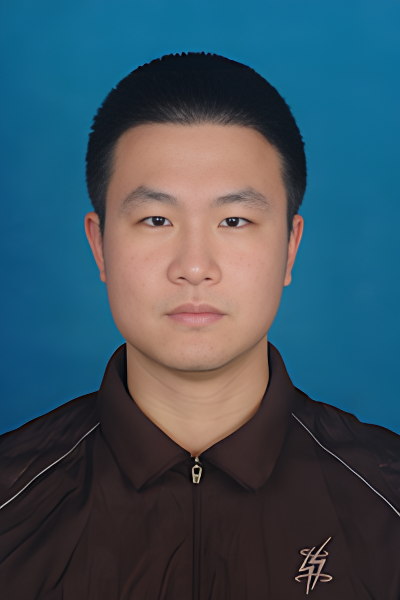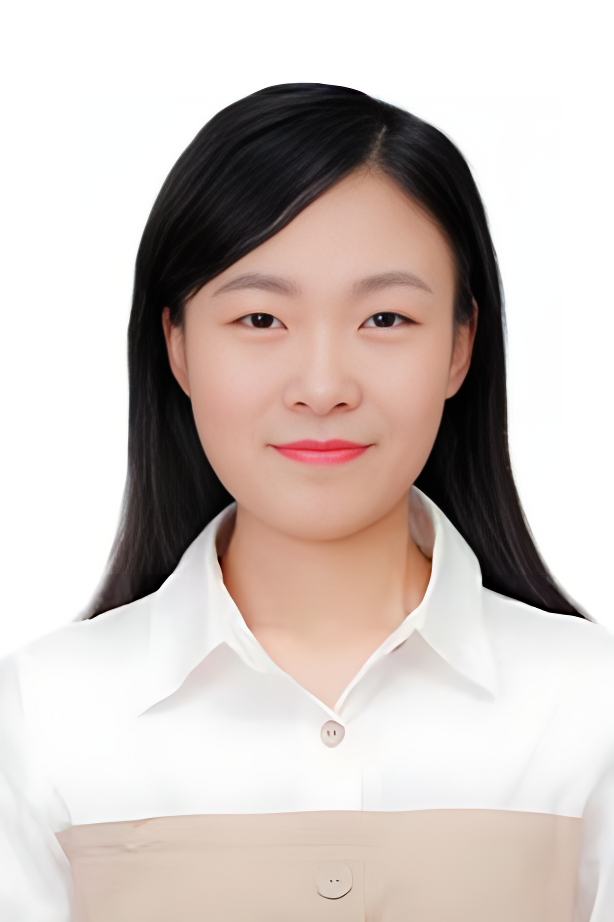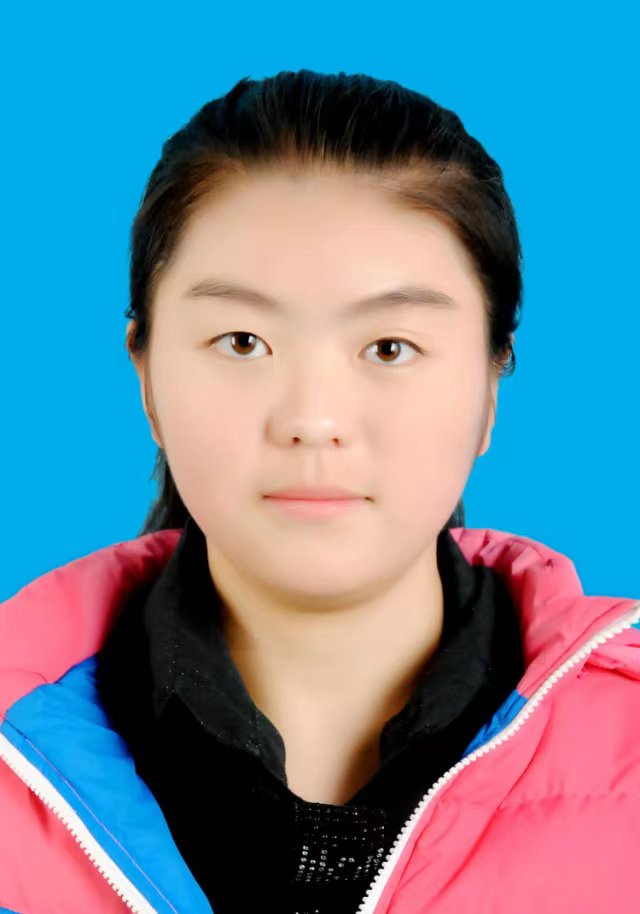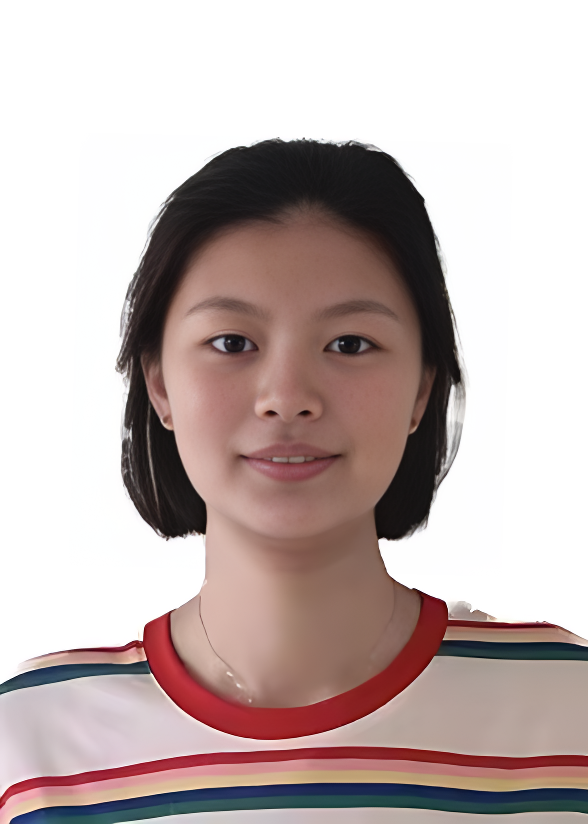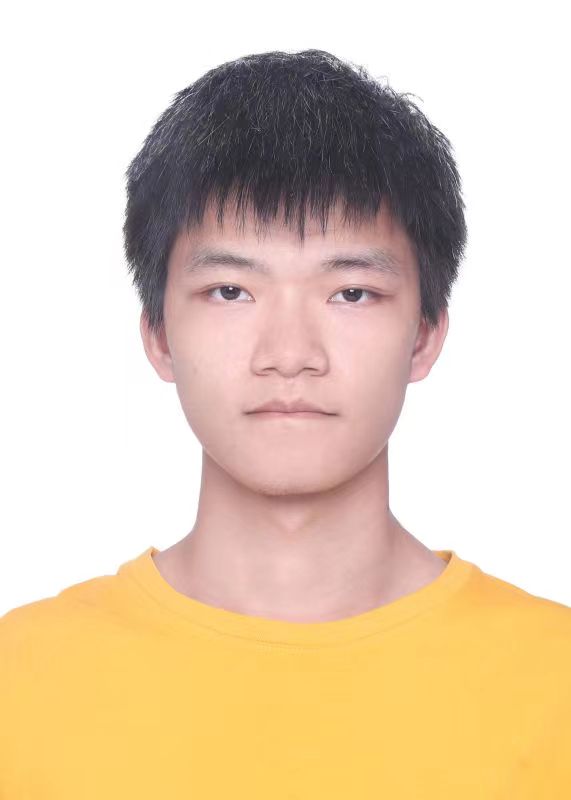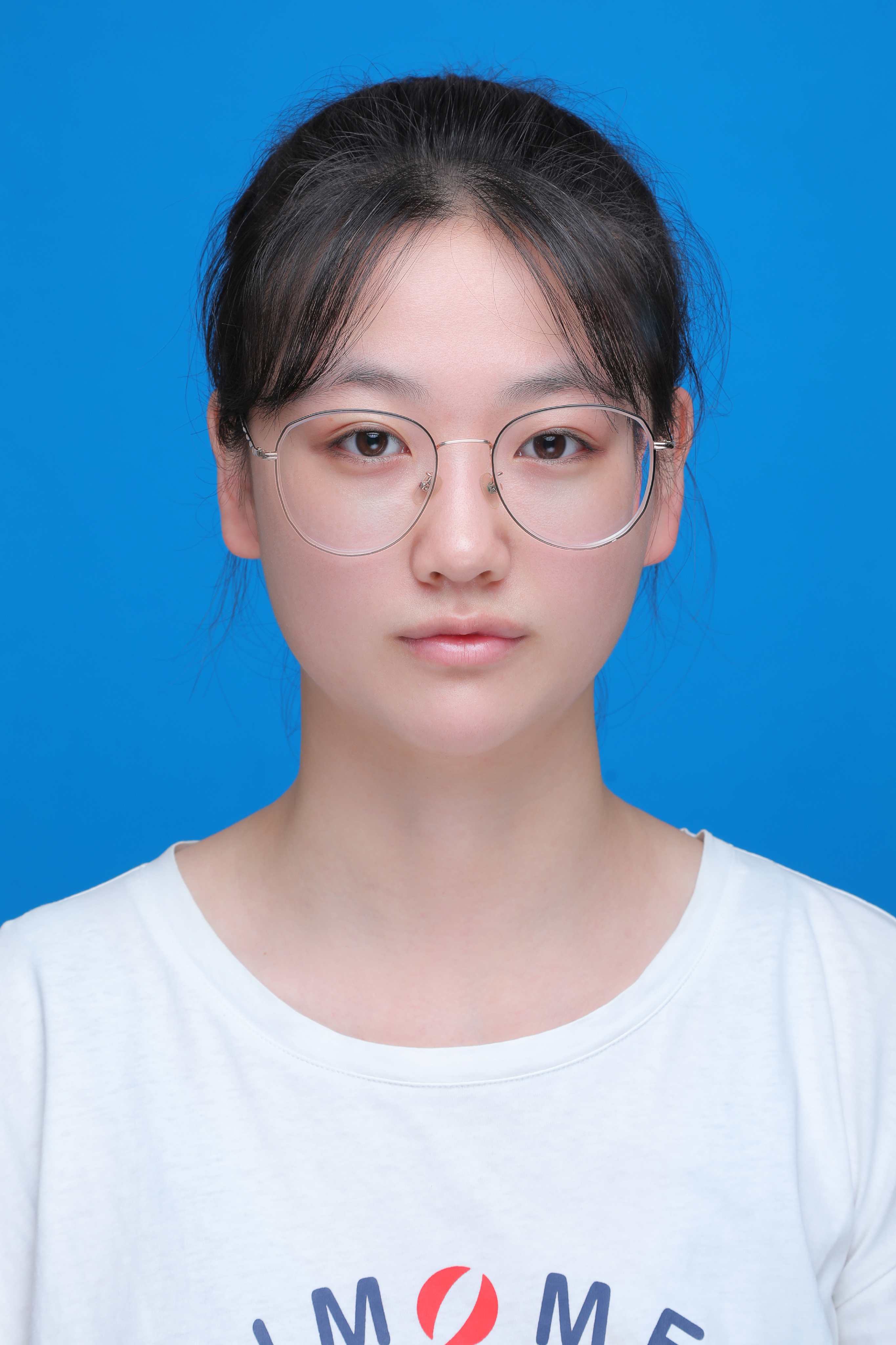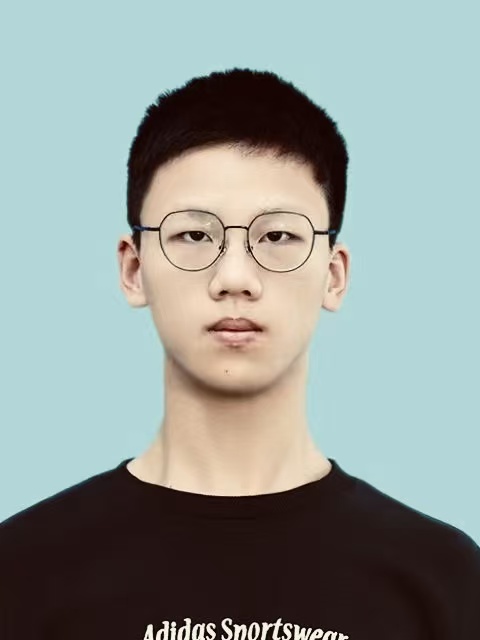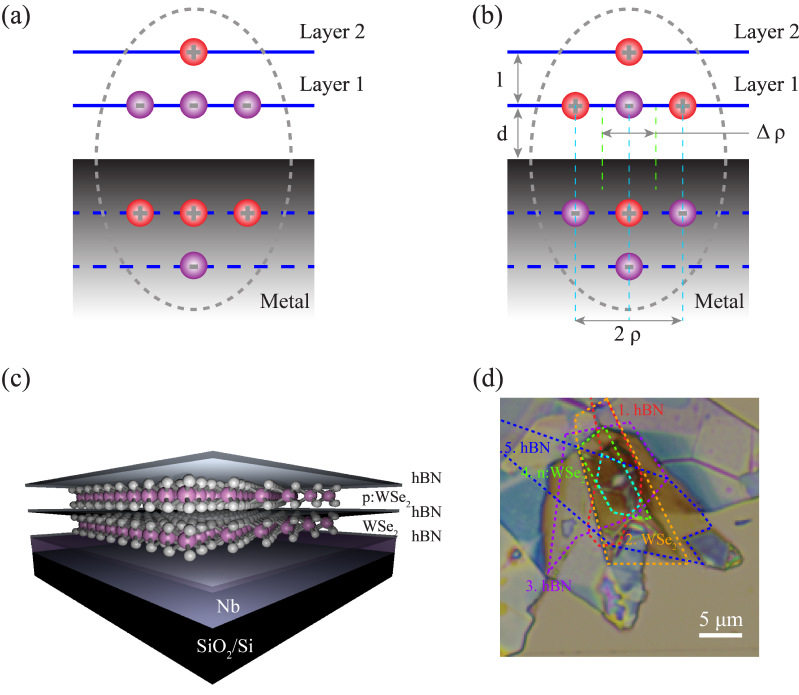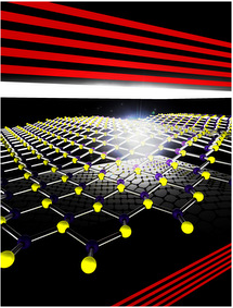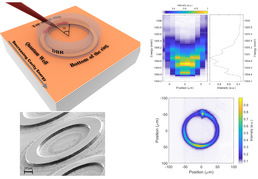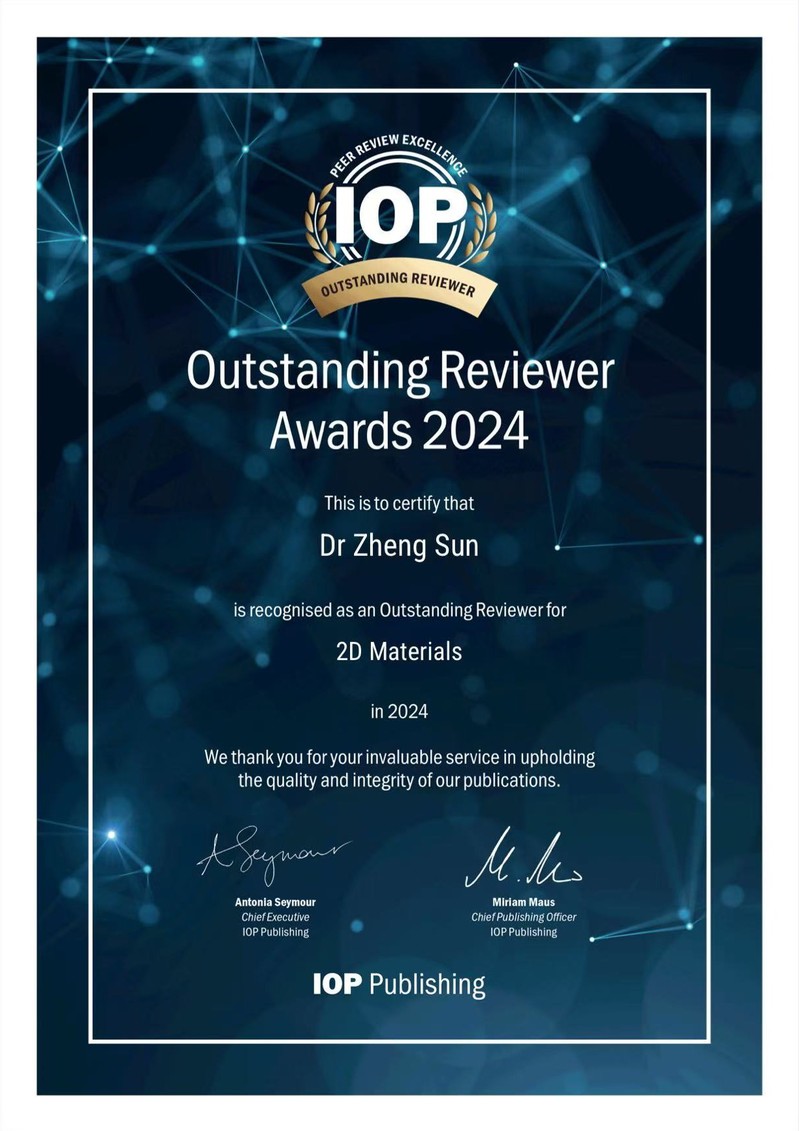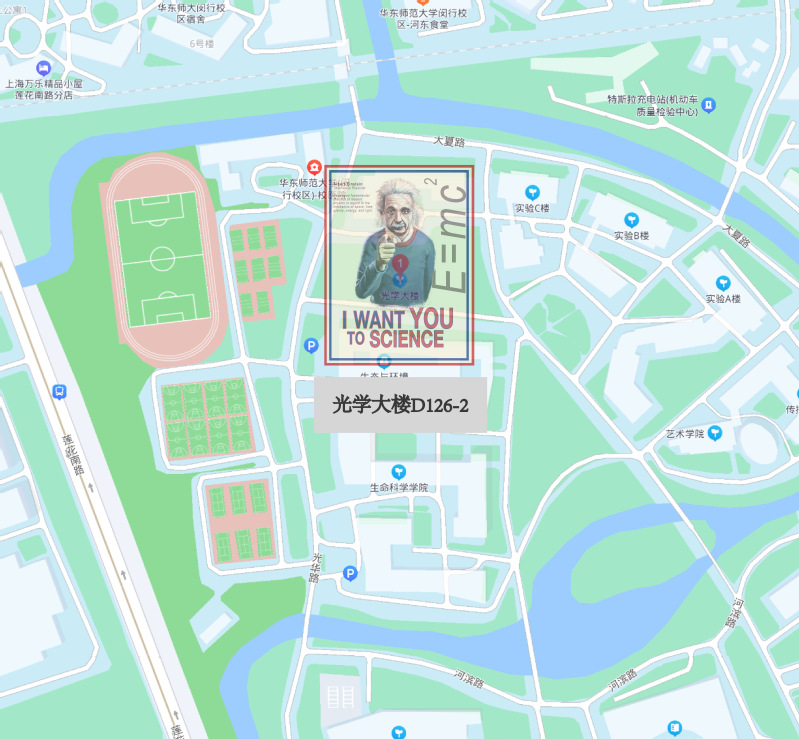个人资料
教育经历
工作经历
个人简介孙政博士毕业于纽约市立大学研究生院。2017年至2020年在匹兹堡大学从事博士后工作。长期致力于低维半导体材料的腔量子电动力学研究。在探索微观尺度下光和物质相互作用,研制可调控材料光电特性的光子晶体器件及应用等方面取得一系列创新成果。近年来,以第一或通讯作者,在Nature Photonics; ACS Nano; Nano Letters; Light Science & Applications; Laser & Photonics Review; ACS Photonics; Nanophotonics等国际权威期刊上发表学术论文30余篇。曾入选国家优秀青年基金(海外)、上海市****引进计划和上海市浦江人才计划。主持参与科技创新2030重大项目、科技部重点研发专项、基金委面上项目、上海市“科技创新”行动计划基础研究项目、上海市科委项目和高校联合项目等。 个人主页:http://sunzheng85.github.io/ZSUN/ 招生信息:欢迎对宏观量子态调控及其光电器件应用方面感兴趣的本科生、研究生和具备物理、材料科学背景的博士后咨询报名吴健教授团队孙政研究员课题组。 社会兼职《纳微快报》(Nano-Micro Letters,NML)、《光子学报》青年编委; 并为以下杂志常约审稿人 Nature; Nature Photonics; Nature Nanotechnology; Nature Communications; ACS Nano; Nano Letters; Physical Review Letters; Physical Review X; Optica; Light Science & Applications and so on. 研究方向🧩 中文版|课题组简介🌟 研究主题我们课题组主要研究光与物质在微腔中的强耦合及其所产生的新型量子态与相变现象。通过有限元模拟与传输矩阵算法,我们设计和优化多种光学微腔结构;并利用高质量布拉格反射镜(DBR)与薄膜生长技术,在纳米尺度上实现对光场与增益介质的精确调控。 💡 强耦合、极化激元玻色-爱因斯坦凝聚以及量子光学当光子与激子的相互作用速率超过它们的弛豫速率时,系统进入强耦合区,形成混合准粒子——激子极化激元(exciton–polariton)。在合适的条件下,极化激元可发生玻色–爱因斯坦凝聚(BEC),形成具有自发相干性的宏观量子态。通过精心设计的微腔结构,我们可以观察到极化子凝聚体的超流行为(superfluidity),以及由相干性导致的干涉与相位关联等现象。此外,微腔中的光场不仅是能量传递的媒介,更表现出显著的量子化特性(quantized light field)。通过控制腔模与物质激发之间的相互作用,我们能够产生具有非经典统计特征的光场,如亚泊松分布光(sub-Poissonian light)、压缩光(squeezed light)与单光子发射(single-photon emission)。这些量子光效应(quantum light effects)不仅揭示了光场的微观量子本质,也为量子信息处理、量子通信和量子测量提供了新的平台。 🔬 基础科学问题我们关注若干重要的基础科学问题:
⚙️ 应用与材料体系我们探索极化子凝聚体对电子输运性质的调控,研究光诱导超导等新型量子效应。同时,我们积极开发新材料体系,包括:
课题组成员:博士后:
孙迪 2024级 博士研究生:
陈星州 2024级 张敏 2023级 范悦宁 2023级 管媛君 2025级
范佳荫 2026级 硕士研究生:
丁承烨 2023级 南欣蕊 2026级 本科生:
王道成 2023级 贾呈轩 2026级 Alumni:1. 张旭鑫 2025届 本科生 (上海交通大学研究生) 招生与培养开授课程研究生课程: 《激光前沿讲座》 本科生课程: 《近代物理学实验》;《大学物理实验四》 科研项目I Toward a room temperature Schafroth superconductor based on charged excitonic complexes
Zheng Sun* et.al, Nano Lett., 21(18), 7669-7675 (2021) II Photoluminescence switching in a two-dimensional atomic crystal
Zheng Sun* et.al, ACS Nano, 15 (12), 19439-19445 (2021) III Observation of the Interlayer Exciton Gases in WSe2-p:WSe2 Heterostructures
Interlayer excitons (IXs) possess a much longer lifetime than intralayer excitons due to the spatial separation of the electrons and holes; hence, they have been pursued to create exciton condensates for decades. The recent emergence of two-dimensional (2D) materials, such as transition metal dichalcogenides (TMDs), and of their van der Waals heterostructures (HSs), in which two different 2D materials are layered together, has created new opportunities to study IXs. Here we present the observation of IX gases within two stacked structures consisting of hBN/WSe2/hBN/p:WSe2/hBN. The IX energy of the two different structures differed by 82 meV due to the different thickness of the hBN spacer layer between the TMD layers. Zheng Sun* et.al, ACS Photonics, 7(7), 1622-1627 (2020) IV Polaritons 2D TMDs and Devices
Two-dimensional atomic crystals of graphene, aswell as transtion-metal dichalcogenides, have emerged as a class of materals that demonstrate strong interaction with light. This interaction can be further controlled by embedding such materials into optical microcavities. When the interaction rate is engineered to be faster than dissipation from the light and matter entities, one reaches the ‘strong coupling’ regime. This results in the formation of half-light, half-matter bosonic quasiparticles called microcavity polaritons. Realizing strong coupling at room temperature in two-dimensional materials that offer a disorder-free potential landscape provides an attractive route for the development of practical polaritonic devices. 1. Zheng Sun, et al., Nat. Photonics, 11, 491-496 (2017) 2. Zheng Sun*, et al., [Invited], Nat. Photonics, [News and Views], 13, 370-371, (2019) 3. X. Liu, T. Galfsky, Z. Sun, et al., Nat. Photonics, 9, 30–34 (2015) 4. Biswanath Chakraborty, Jie Gu, Zheng Sun, et al., Nano Lett., 18 (10), 6455-6460 (2018) 5. Zheng Sun*, et al., Appl. Phys. Lett., 115, 161103 (2019) 6. Zheng Sun*, et al., Solid State Communications, 288, 18-21 (2019) V Hyperbolic Metamaterials
Light-matter interactions can be controlled by manipulating the photonic environment. An optical topological transition in strongly anisotropic metamaterials that results in a dramatic increase in the photon density of states—an effect that can be used to engineer this interaction. The increased rates of spontaneous emission of emitters positioned near the metamaterial could be modified by controlling the transition in the topology of the iso-frequency surface from a closed ellipsoid to an open hyperboloid using artificially nanostructured metamaterials. Altering the topology of the iso-frequency surface by using metamaterials provides a fundamentally new route to manipulating light-matter interactions. 1. T. Galfsky, Zheng Sun#, et al., Nano Lett., 16(8), 4940-4945 (2016) 2. T. Galfsky, Z. Sun, et al., Optical Materials Express, 5(12), 2878-2883 (2015) VI Polariton GaAs Quantum Wells We present a study of the macroscopic dynamics of a polariton condensate formed by non-resonant optical excitation in a quasi-one-dimensional ring shaped microcavity. The presence of a gradient in the cavity photon energy creates a macroscopic trap for the polaritons in which a single mode condensate is formed. With time- and energy-resolved imaging we show the role of interactions in the motion of the condensate as it undergoes equilibration in the ring. These experiments also give a direct measurement of the polariton-polariton interaction strength above the condensation threshold. Our observations are compared to the open-dissipative one-dimensional Gross-Pitaevskii equation which shows excellent qualitative agreement.
1. S. Mukherjee, Z. Sun, et al., Phys. Rev. B, 100(24), 245304 (2019) 2. S. Mukherjee, Z. Sun, et al., Phys. Rev. B, 103(16), 165306 (2021) 学术成果主要学术成果(Google Scholar): (* Corresponding author; # Co-first author) Under Consideration 1. Chengye Ding, Meng Niu, Yuanjun Guan,Xingzhou Chen, Mengyao Xu, Yuening Fan, Xiaoqing Zhou,Kenji Watanabe, Takashi Taniguchi, Pavlos G. Savvidis, Jie Gu, Zhe-Yu Shi, Zheng Sun*, Jian Wu, “ Twist-angle-controlled magneto-polarization switching in WS₂/WSe₂heterostructure”. (2025) 2. Yuanjun Guan, Mengyao Xu, Zhen Cui, Xingzhou Chen, Chengye Ding, Xiaoqing Zhou, Kenji Watanabe, Takashi Taniguchi, Jesper Levinsen, Meera M. Parish, Pavlos G. Savvidis, Zhe-Yu Shi, Zheng Sun*, Jian Wu, “Observation of electrically generated polaron-polaritons in a monolayer MoSe₂ Microcavity”. (2025) 3. Min Zhang, Di Sun, Fangying Peng, Xuekai Ma, Changchang Huang, Peifen Lu, Peng Li, Weihang Zhou, Stefan Schumacher, Hui Li, Feng Li, Zheng Sun*, Jian Wu, “Ultrafast Dynamics of Reconfigurable Mode Switching of Polariton Condensates Revealed in a Tunable ZnO Microcavity”. (2025) 4. Yan Zhang, Mingyong Jing, Hong-Hua Fang, Jiawen Liu, Yiyang Gong, Menghui Jia, Shuting Dai, Zhuoya Zhu, Jiasong Hu, Zheng Sun, Xinfeng Liu, Wenjing Tian, Hai-Long Chen, Bin Xu, Hongbo Sun, “Coherent Phonon Modulated Superfluorescence at Room Temperature from Molecular Crystals”. (2025) 5. J. Beaumariage, Z. Sun, H. Alnatah, D. M. Myers, M. Steger, L. N. Pfeiffer, K. West, Z. Wasilewski and D. W. Snoke, “Measurement of exciton fraction of microcavity exciton-polaritons using transfer-matrix modeling”. (2024) 2025 1. Yongsheng Hu, Yuanjun Guan, Teng Long, Wei Xie, Hongxing Xu, Qing Liao, Zheng Sun*, Jian Wu, “Optical spin Hall effect driven by hybrid spin-orbit coupling in organic microcavities”. Science Bulletin doi: 10.1016/j.scib.2025.12.056 (2025) 2.Qiaochu Wan, Daniel Vaz, Li Xiang, Anshul Ramavath, Brandon Vargo, Juntong Ye, Jonathan Beaumariage, Kenji Watanabe, Takashi Taniguchi, Zheng Sun, Dmitry Smirnov, Nathan Youngblood, Igor Bondarev, David Snoke, “Light-induced Electron Pairing in a Bilayer Structure”. Reports on Progress in Physics, DOI: 10.1088/1361-6633/ae2ba1 (2025) 3. Jiqing Tan, Di Sun, Chun Zhou, Xinjie Li, Yichi Zhong, Qiangqiang Wang, Danqun Mao, Long Zhang, Hongxing Dong, Zheng Sun*, Wei Xie, and Hongxing Xu, “Collective excitonic assembly in perovskite superlattice” Laser & Photonics Rev., 19 (16), 2401847 (2025) 4. Yuanjun Guan, Xingzhou Chen, Mengyao Xu, Yuening Fan, Chengye Ding, Zhe-Yu Shi and Zheng Sun*, “ Ultrafast dynamics of exciton- and trion-polaritons in an atomic crystal microcavity”. [Invited] Opt. Mater. Express 15 (9) 2264-2272 (2025) 2024 1. Shiyi Yuan, Yuanjun Guan, Yang Zhao, Cunbin An, Bo Liao, Chunling Gu, Zheng Sun*, Qing Liao, Hongbing Fu, “Colorful organic polariton light-emitting diodes with narrowbands emission” Laser & Photonics Rev., 19 (6), 2401532 (2024) 2. Yongsheng Hu, Danqun Mao, Linqi Chen, Yuanjun Guan, Long Zhang, Hongxing, Dong, Hongxing Xu, Wei Xie, Zheng Sun*, “ Cavity-enhanced superfluorescence induced stimulated energy transfer in perovskite quantum dot supperlattice” Laser & Photonics Rev., 18 (12), 2400650 (2024) 3. Yuening Fan, Qiaochu Wan, Qi Yao, Xingzhou Chen, Yuanjun Guan, Hassan Alnatah, Daniel Vaz, Jonathan Beaumariadge, Kenji Watanabe, Takashi Taniguchi, Jian Wu, Zheng Sun* and David Snoke, “High efficiency of exciton-polariton lasing in a 2D multi-layer structure” ACS Photonics, 11 (7), 2722-2728 (2024) 4. Danqun Mao, Linqi Chen, Zheng Sun*, Min Zhang, Zhe-yu Shi, Yongsheng Hu, Long Zhang, Jian Wu, Hongxing Dong, Wei Xie, Hongxing Xu, “ Observation of transition from superfluorescence to polariton condensation in perovskite quantum dots”, Light Sci. & Appl., 13 (1), 34 (2024) 5. Lingxiao Yu, Minglang Gao, Qian Lv, Hanyuan Ma, Jingzhi Shang, Zhenghong Huang, Zheng Sun, Ting Yu, Feiyu Kang and Ruitao Lv, “High-fidelity Transfer of 2D Semiconductors and Electrodes for van der Waals Devices”, ACS Nano 18 (48), 33131-33141 (2024) 2023 1. Xingzhou Chen, Hassan Alnatah, Danqun Mao, Mengyao Xu, Qiaochu Wan, Jonathan Beaumariage, Wei Xie, Hongxing Xu, Zhe-Yu Shi, David Snoke, Zheng Sun*, Jian Wu, “ Bose condensation of upper-branch exciton-polaritons in a transferrable microcavity”, Nano Lett., 20 (23), 9538-9546 (2023) 2. Min Zhang, Yuan Tian, Xingzhou Chen, Zheng Sun*, Xiaolong Zhu, Jian Wu, “ Ultra-large Rabi splitting in the plasmon-exciton polaritons at room temperature”, Nanophotonics, 12 (16), 3267-3275 (2023) 3. Xingzhou Chen, Zheng Sun*, Ming Zhang, Ming Li, Zhigao Hu, Kenji Watanabe, Takashi Taniguchi, David Snoke, Zhe-Yu Shi, Jian Wu, “Broadband enhancement of absorption by two-dimensional atomic crystals modeled as non-Hermitian photonics scattering”, Appl. Phys. Lett., 122, 0411105 (2023) 4. D. W. Snoke, V. Hartwell, J. Beaumariage, S. Mukherjee, Y. Yoon, D. M. Myers, M. Steger, Z. Sun, K. A. Nelson, L. N. Pfeiffe, “ Experimental determinations of polariton-polariton interactions in microcavities”, Phys. Rev. B, 107, 165302 (2023) 5. Jingyan Feng, Hui Li, Zheng Sun, Tim Byrnes, “ Entanglement generation and detection in split exciton-polariton condensates” Phys. Rev. A, 108 053301 (2023) 2022 1. Fei Chen, Hui Li, Hang Zhou, Song Luo, Zheng Sun, Ziyu Ye, Fenghao Sun, Jiawei Wang, Yuanlin Zheng, Xianfeng Chen, Hongxing Xu, Hongxing Xu, Tim Byrnes, Zhanghai Chen, Jian Wu, “Optically Controlled Femtosecond Polariton Switch at Room Temperature”, Phys. Rev. Lett., 129, 057402 (2022) 2. Fei Chen, Hang Zhou, Hui Li, Song Luo, Zheng Sun, Zhe Zhang, Fenghao Sun, Beier Zhou, Hongxing Dong, Huailiang Xu, Hongxing Xu, Alexey Kavokin, Zhanghai Chen, Jian Wu, “Femtosecond dynamics of a polariton bosonic cascade at room temperature”, Nano Lett., 22 (5), 2023-2029 (2022) 3. Fei Chen, Hang Zhou, Ziyu Ye, Song Luo, Zheng Sun, Yuanlin Zheng, Xianfeng Chen, Huailiang Xu, Hongxing Xu, Tim Byrnes, Hui Li, Zhanghai Chen, Jian Wu, “Buildup dynamics of room-temperature polariton condensation”, Phys. Rev. B, 106 (2), L020301 (2022) 4. Ziyu Ye, Fei Chen, Hang Zhou, Song Luo, Fenghao Sun, Zheng Sun, Yuanlin Zheng, Xianfeng Chen, Huailiang Xu, Zhanghai Chen, Hui Li, Jian Wu, “Exciton-Polarization-dependent dynamics of polariton condensates at room temperature” Journal of Physics: Condensed Matter, 34 (22) (2022) 2021 1. Zheng Sun*#, Ke Xu#, Chang Liu#, Jonathan Beaumariage, Jierui Liang, Susan K Fullerton-Shirey, Zhe-Yu Shi, Jian Wu, David Snoke, “Photoluminescence switching in a two-dimensional atomic crystal”, ACS Nano 15 (12), 19439-19445 (2021) 2. Z. Sun*, J. Beaumariage, Q.Wan, H. Alnatah, N. Hougland, J. Chisholm, Q. Cao, K. Watanabe, T. Taniguchi, B. Hunt, I. V. Bondarev, D. W. Snoke, “Charged bosons made of fermions in a solid state system without Cooper pairing”, Nano Lett., 21 (18), 7669-7675 (2021) 3. Xu Wang, Lishu Wu, Xuewen Zhang, Weihuang Yang, Zheng Sun, Jingzhi Shang, Wei Huang and Ting Yu, “Observation of Bragg Polariton in Monolayer Tungsten Disulphide”, Nano Research 15, 1479-1485 (2021) 4. Shouvik Mukherjee, Valera K Kozin, Anton V Nalitov, Ivan A Shelykh, Zheng Sun, David M Myers, Burcu Ozden, Jonathan Beaumariage, Mark Steger, Loren N Pfeiffer, Ken West, David W Snoke, “Dynamics of spin polarization in tilted polariton rings”, Phys. Rev. B, 103, 165306 (2021) 5. Fei Chen, Hui Li, Hang Zhou, Ziyu Ye, Song Luo, Zheng Sun, Fenghao Sun, Jiawei Wang, Huailiang Xu, Hongxing Xu, Zhanghai Chen, Jian Wu, “Ultrafast Dynamics of Exciton- Polariton in Optically Tailored Potential Landscapes at Room Temperature” Journal of Physics: Condensed Matter, 34 (2) (2021) Old 1. Zheng Sun, Jie Gu, Areg Ghazryan, Zav Shotan, Christopher R. Considine, Michael Dollar, Biswanath Chakraborty, Xiaoze Liu, Pouyan Ghaemi, S. Kéna-Cohen, Vinod M. Menon, “Optical Control of Room Temperature Valley Polaritons”, Nat. Photonics, 11, 491-496 (2017) 2. Zheng Sun*, David W Snoke, “Optical switching with organics”, Nat. Photonics, 13, 370-371, (2019) 3. X. Liu, T. Galfsky, Z. Sun, F. Xia, E. Lin, Y.-H. Lee, S. Kéna-Cohen, and V. M. Menon, “Strong light–matter coupling in two-dimensional atomic crystals”, Nat. Photonics, 9, 30–34 (2015) 4. T Galfsky#, Zheng Sun#, CR Considinel, CT Chou, WC Ko, YH Lee, E Narimanov, “Broadband enhancement of light-matter interaction in 2D semiconductors by photonic hypercrystals”, Nano Lett., 16 (8), 4940-4945 (2016) 5. Zheng Sun*, Jonathan Beaumariage, Qingrui Cao, Benjamin Hunt, KenjiWatanabe, Takashi Taniguchi, David W. Snoke, “Observation of the Interlayer Exciton Gases in WSe2- p: WSe2 Heterostructures”, ACS Photonics, 7 (7), 1622-1627 (2020) 6. Biswanath Chakraborty, Jie Gu, Zheng Sun, Mandeep Khatoniar, Rezlind Bushati, Alexandra L Boehmke, Rian Koots, Vinod M Menon, “Control of Strong Light-matter Interaction in Monolayer WS2 Through Electric Field Gating”, Nano Lett., 18 (10), 6455-6460, (2018) 7. Zheng Sun*, Jonathan Beaumariage, Ke Xu, Jierui Liang, Shaocong Hou, Stephen R. Forrest, Susan K Fullerton-Shirey, David W. Snoke, “Electric-field-induced optical hysteresis in single-layer WSe2”, Appl. Phys. Lett., 115, 161103 (2019) 8. Zheng Sun*, Jonathan Beaumariage, Hema C P Movva, Sayema Chowdhury, Anupam Roy, Sanjay K Banerjee, David W Snoke, “Stress-induced bandgap renormalization in atomic crystals”, Solid State Communications, 288, 18-21, (2019) 9. Zheng Sun, LinHong Yang, XueChu Shen, ZhangHai Chen, “Anisotropic Raman spectroscopy of a single b-Ga2O3 nanobelt”, Science Bulletin, 57(6) (2012) (Cover Story) 10. Qijun Ren, Jian Lu, H H Tan, ShanWu, Liaoxin Sun, Weihang Zhou, Wei Xie, Zheng Sun, Yongyuan Zhu, C Jagadish, S C Shen, Zhanghai Chen, “Spin-Resolved Purcell Effect in a Quantum Dot Microcavity System”, Nano Lett., 12 (7), 3455-3459 (2012) 11. S. Mukherjee, D. M. Myers, R. G. Lena, B. Ozden, J. Beaumariage, Z. Sun, M. Steger, L. N. Pfeiffer, K. West, A. J. Daley, D. W. Snoke, “Observation of nonequilibrium motion and equilibration in polariton rings”, Phys. Rev. B, 100, 245304 (2019) 12. Z. Sun, Y. P. Xu, S. Li, T. F. George, “Forbidden Singlet Exciton Transitions Induced by Localization in Polymer Light-Emitting Diodes in a Strong Electric Field”, J. Phys. Chem. B 115 (5), 869-873 (20112) 13. T. Galfsky, Z. Sun, Z. Jacob, V. M. Menon, “Preferential emission into epsilon-near-zero metamaterial”, Opt. Mat. Exp., 5 (12), 2878-2883 (2015) 14. Y. Lin-Hong, D. Hong-Xing, S. Zheng, S Liao-Xin, S Xue-Chu, C Zhang-Hai, “Temperature-Induced Phase Transition of In2O3 from a Phombohedral Structure to a Body-Centered Cubic Structure”, C. Phys. Lett., 28 (8) 087803 (2011) 荣誉及奖励2025 Session Organizer Award (SOA) at PIERS 2025 in Chiba! (https://piers.org/awards/soa.html) 2025 Achieving IOP Outstanding Reviewer
2023 Achieving IOP Trusted Reviewer status
2021 华东师范大学紫江优秀青年学者 2021 国家****引进计划 2021 上海市浦江人才计划 2020 上海市****引进计划 2020 华东师范大学紫江青年学者 实验室地址
|
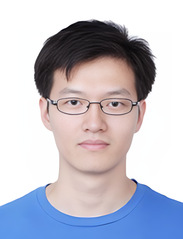
|
孙政 |

